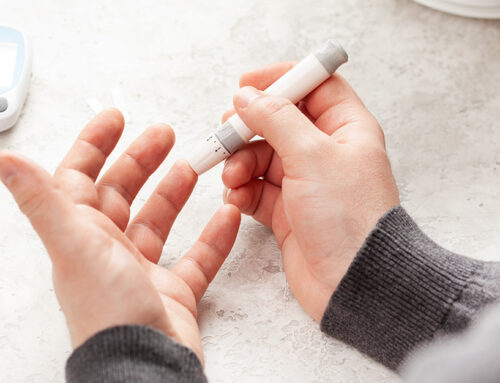
Do you eat a healthy diet, exercise regularly, and practice other healthy habits to manage your Hashimoto’s hypothyroidism, but sit long hours each day at work? If so, you could be undoing your good work.
Sitting, even if you otherwise practice healthy habits, is associated with poor cardiovascular health, higher inflammation, and more belly fat, according to a 2011 Australian study. This is bad news for the millions of Americans who must work at a desk. In fact, it can feel downright insulting to learn that all our healthful efforts are being thwarted by our jobs.
Studies link prolonged sitting with compromised metabolic health, higher risk of disease, and shorter life span. Witness this cascade of ill effects:
- Electrical activity in muscles goes silent
- Calorie burning plummets
- Insulin sensitivity drops, raising the risk of obesity and Type 2 diabetes
- Enzymes responsible for clearing fat and triglycerides from the bloodstream plunge, lowering the levels of HDL (good) cholesterol
Sadly, these risks remain regardless of our physical activity level outside of work. Worst of all, these metabolic changes don’t happen gradually, but instead swiftly, within 24 hours.
This is frustrating news for the person working hard to manage his or her Hashimoto’s hypothyroidism condition.
Antidotes to sitting for Hashimoto’s hypothyroidism
The results of your good exercise and diet habits needn’t be lost to your office chair. Sitting disease antidotes can be as simple as moving around more or working while standing.
Create a treadmill desk
A treadmill desk is just what it sounds like, a desktop built over a treadmill. Users walk very slowly on the treadmill and can easily talk, type, and perform other desk work while burning 100 calories an hour and staving off metabolic risks. Treadmill desks can be homemade, purchased to fit over an existing treadmill, or ordered, all inclusive, for up to $4,400.
Stand at your desk
A quicker and less cumbersome fix is a standing desk. To make one, try stacking something tall on your desk on which to set your computer. If you work at home, you might choose to work on your laptop while standing at the kitchen counter. Standing burns more calories than sitting and engages more muscles, enhancing metabolic activity.
Frequent breaks are key for Hashimoto’s hypothyroidism
If you do choose to sit, you can mitigate the effects of sitting disease with frequent breaks and lots of movement throughout the day. Australian researchers found those who took frequent breaks had lower levels of C-reactive protein, an important marker of inflammation, and smaller waists as well. Waist size, like excess belly fat, is a marker for increased risk for heart disease, Alzheimer’s, and other inflammation-related disorders. High-risk waist circumference is over 40 inches for men and over 35 inches for women.
These are important considerations for the person managing Hashimoto’s hypothyroidism or other autoimmune conditions.
Take a stand against excessive sitting. Get up every half hour. Move about in your chair. Take the stairs instead of the elevator. Park at the outer reaches of the parking lot. Go ahead and fidget and bustle, and trot between the computer and the printer, or to the bathroom. Research shows not only will you combat sitting disease, but you’ll also be less likely to gain weight compared to your more sedentary coworkers.





